Things to Do in Phoenix Park, Dublin | A Guide to Its Historical Treasures
Phoenix Park in Dublin is a bit of a curiosity. Surrounded by an 11-kilometre-long and 3-metre-high wall, Phoenix Park is the largest enclosed urban park in Europe. As well as offering an essential respite to city dwellers from their hectic urban life, the vast piece of land harbours historical attractions that Irish history fans wouldn’t want to miss.
Fascinating heritage sites can be found within the park’s vast 707 hectares. Among things to do in Phoenix Park, you can visit an ancient tower house, explore a grand mansion, and even a president’s house, or simply take a look at a cross the size of a giraffe. Follow this guide to the best of Phoenix Park to know more.
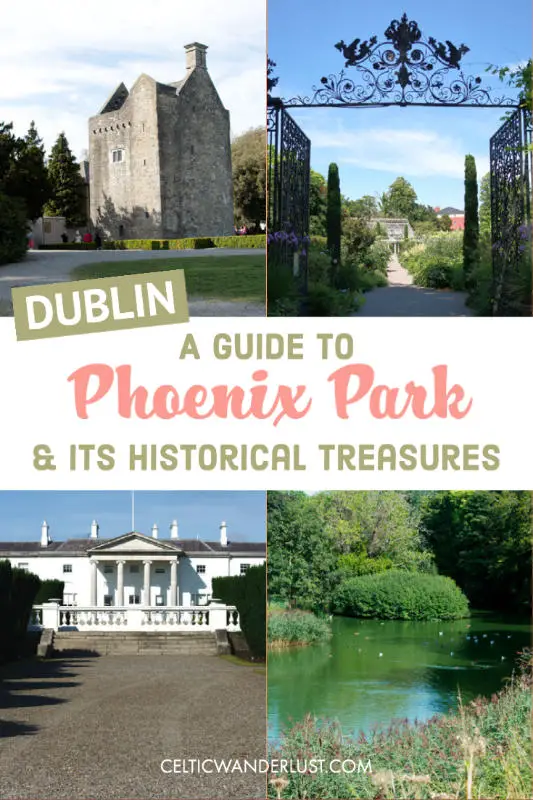
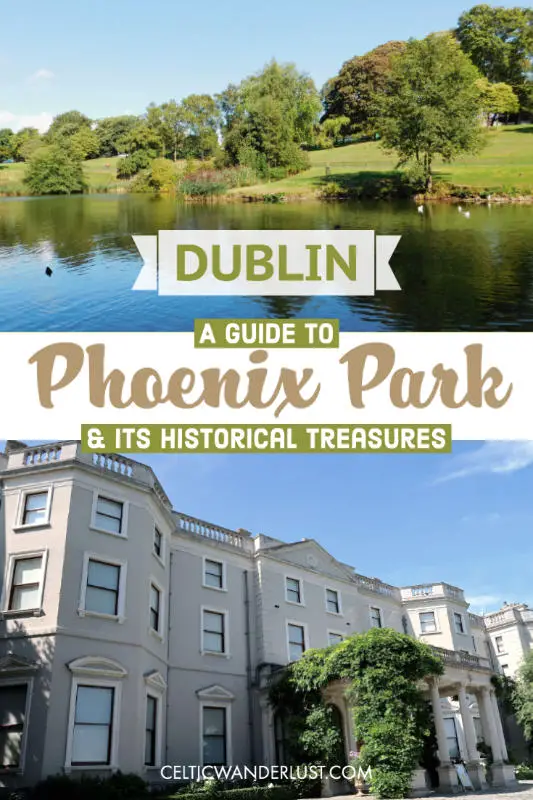
History of Phoenix Park
What is now known as the largest enclosed park in Europe occupies lands that once belonged to the historic Knights Hospitaller. The fighting order had received the lands in the 12th century from Hugh Tyrell, First Baron of Castleknock, to support their work in the crusades.
After Henry VIII fell out with the Pope over the dissolution of his marriage, the land was seized by the King in 1537. Leasing parts of it, Sir Edward Fisher built in 1611 a country residence where the derelict Magazine Fort now stands. He called it “The Phoenix”.
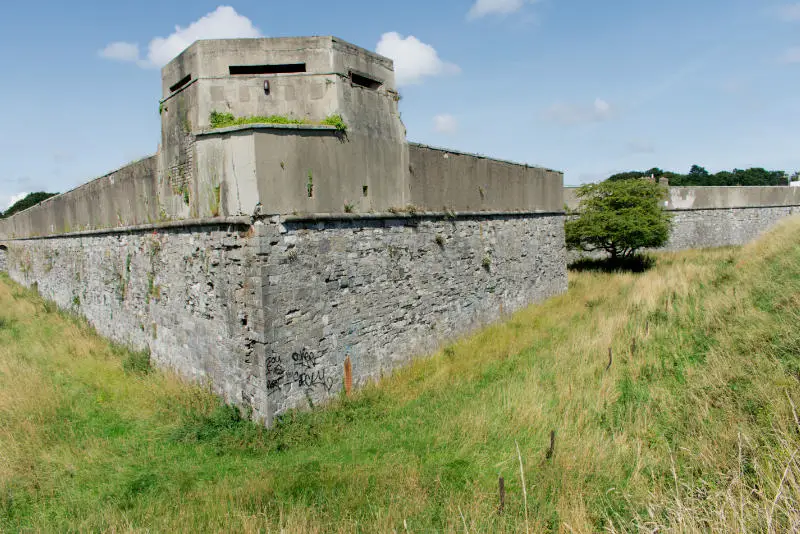
The mythical bird had however nothing to do with the name of the house. At the time, the area was known for having a spring of clear water, or fionn uisce in Irish. Anglicised, the name became “phoenix”.
In the 17th century, the land which extended south of River Liffey up to Kilmainham was developed as a royal hunting park with the introduction of deer, partridge and pheasant. The construction of a wall started in 1662 to protect the animals from poachers. Deer are still roaming friendly today and can even be admired up close, so little they are afraid of visitors nowadays.
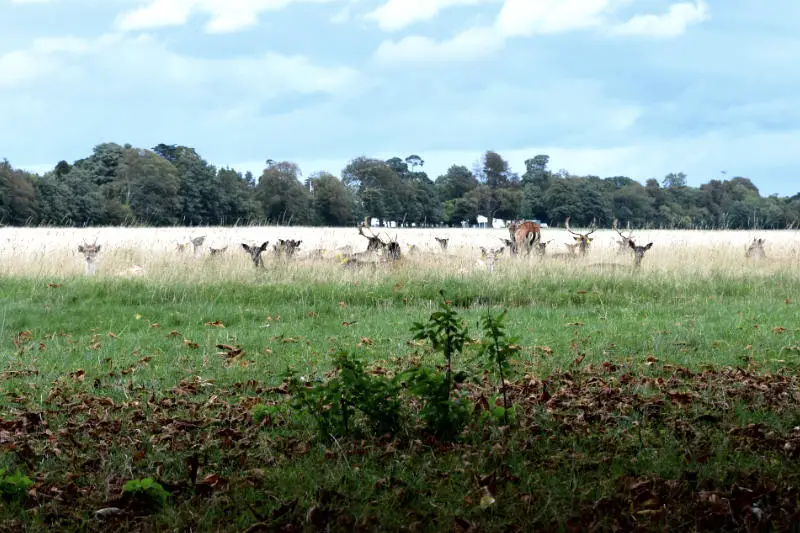
With the construction of the Royal Hospital in Kilmainham in 1680, the park was reduced to its current 1,752 acres and a new 11 km long and 3 metre high wall was erected. In 1745, Phoenix Park opened officially to the public.
You might also be interested in:
– 4 Working Distilleries in Dublin for Irish Whiskey Lovers
– 6 Easy Day Trips from Dublin by Train
– Dublin’s Best Hidden Gems for Nerdy Travellers
– Jam-Packed Dublin Literary Walking Tour for Book Lovers
Things to Do & See in Phoenix Park
Protected under the National Monument Act, Phoenix Park is a vast heritage site with an array of historical attractions to discover. Entrance to Phoenix Park is free and should be on your to-do list if you want to visit Dublin on a budget.
The People’s Flower Gardens
Laid in 1864, the People’s Flower Gardens are the first thing to set your eyes upon as you pass through Phoenix Park’s main gates on Parkgate Street. The neatly cut lawn and tidy, vivid flower beds surrounded by exotic palm trees form a classic Victorian garden popular with local strollers.
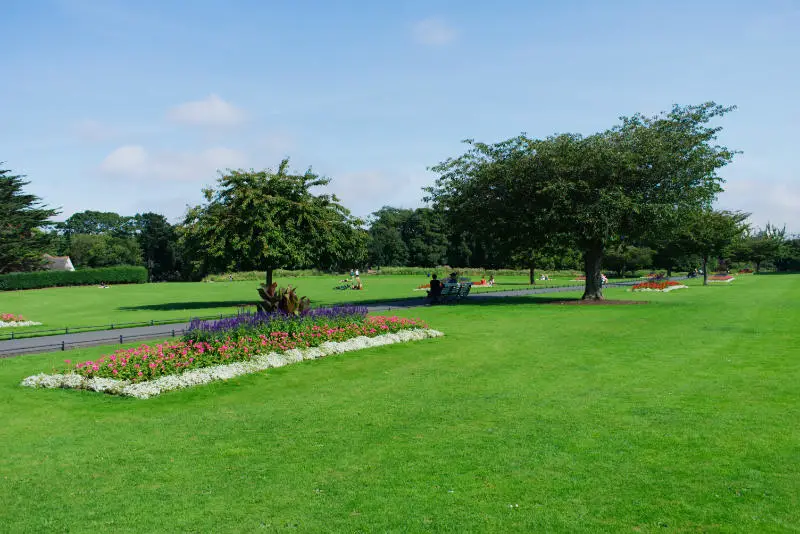
As you follow the garden’s main path lined up with benches, you can’t help but notice flowers curiously placed around an empty plinth. Here used to stand a statue to the memory of the 7th Earl of Carlisle, an Irish scholar and writer. Built in 1870, the statue was destroyed in an explosion.
Nearby, the memorial to Sean Heuston stands untouched. One of the leaders of the 1916 Easter Rising, Sean Heuston was executed in Kilmainham Jail on the 8th May 1916, at the age of only 19. The nearby Heuston train station was named after him.
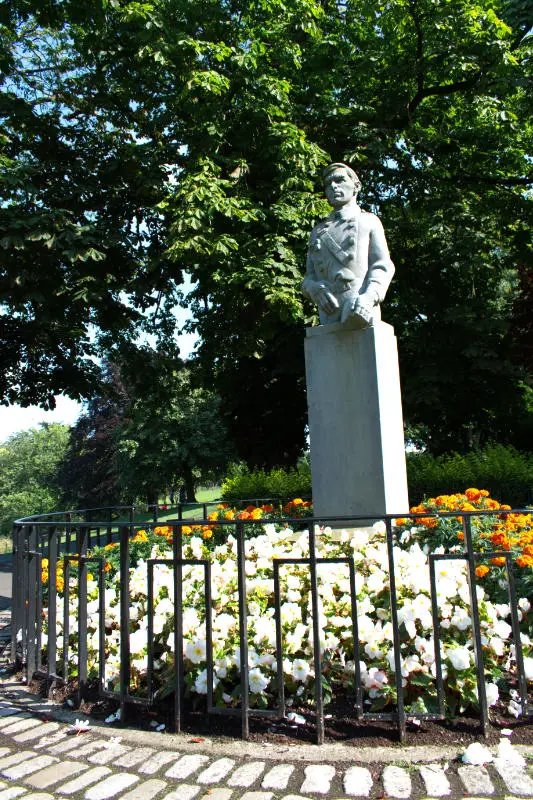
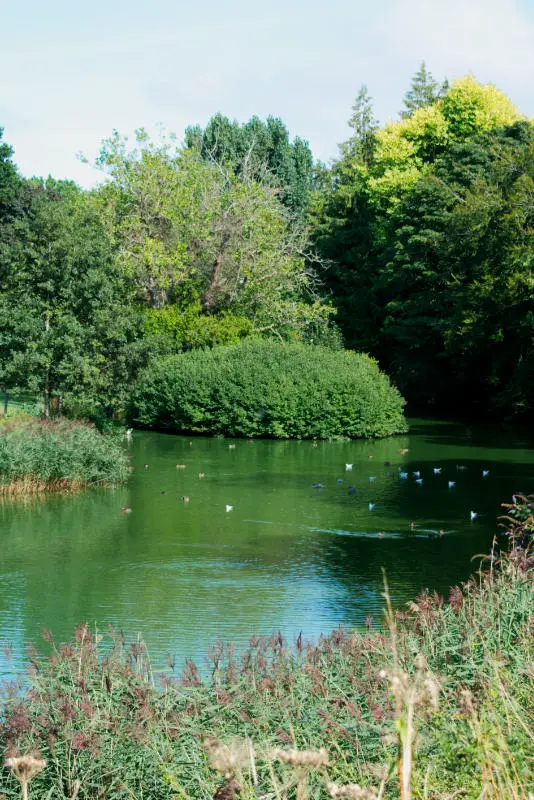
On the other side of the garden, at the bottom of a gentle hollow, can be found a pond visited by facetious ducks and graceful swans. This pond is just one of several that welcome wildlife around the park.
The Wellington Monument
Across from the People’s Flower Gardens, the Wellington Monument dominates the landscape like nothing else in Phoenix Park. The 63-metre-high monument was completed in 1861 and was by then the tallest obelisk in Europe.
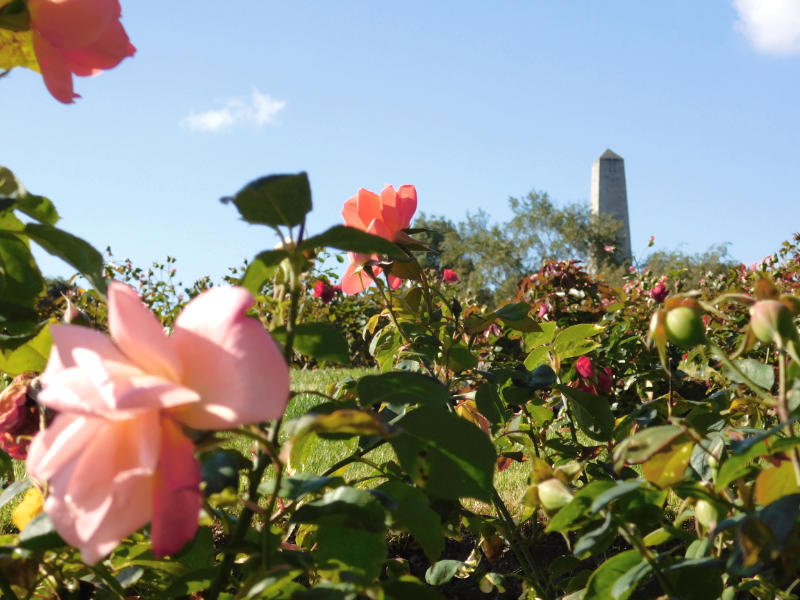
Built in honour of Dublin-born Duke of Wellington, whose forces defeated Napoleon in Waterloo in 1815, the grand obelisk was to be placed on Merrion Square or St Stephen’s Green. Faced with local opposition, the monument was instead built in Phoenix Park.
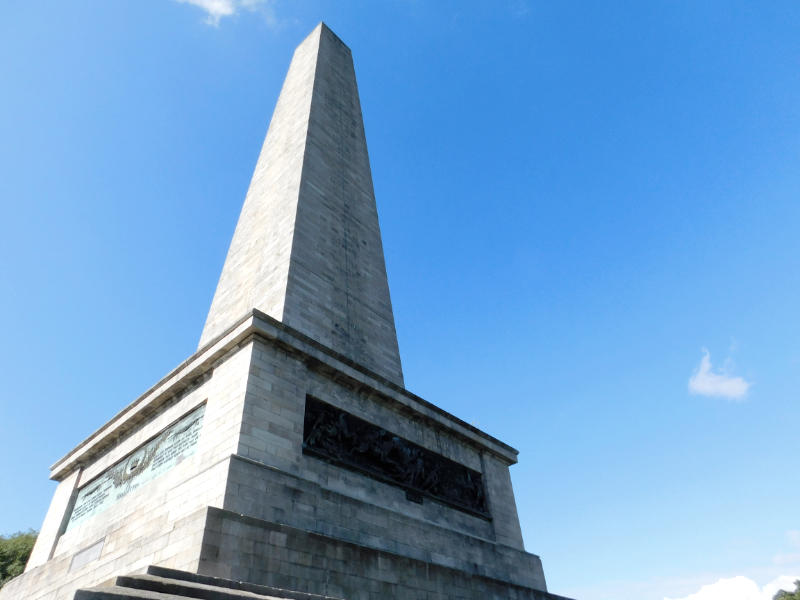
At its base, each of its four sides features bronze plaques commemorating the Duke’s military achievements. They were cast from cannons captured at Waterloo.
Áras an Uachtaráin
As you move further along Chesterfield Avenue, the 4-km-long road running from the main gates on Parkgate Street to Castleknock gates at its western end, you soon catch a glimpse of the white-washed Áras an Uachtaráin, meaning “the house of the President” of Ireland.
Áras an Uachtaráin was originally built as a lodge by Phoenix Park’s very first Park Ranger in 1754. In 1767, the house was bought by the English government to become the residence of the King’s representative in Ireland, the viceroy. In 1876, the Duke of Marlborough was appointed to the position. He moved in with his son as his secretary and his grandson, little Winston Churchill, only aged 2.
In 1802, the Viceregal Lodge was extended with the construction of two new wings, and in 1816 a Portland stone portico of four Ionic columns added to the house’s grandeur.
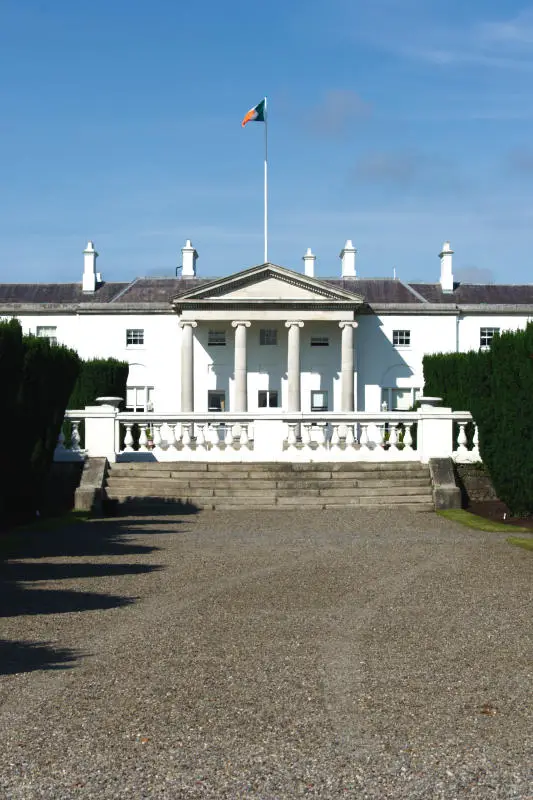
In 1921, the house became the official residence of the Governor General, the Crown’s representative in Ireland, then the residence of the President of Ireland in 1938.
Over the centuries, English kings and queens passed through the house’s imposing, wrought iron, white gates. American presidents from Kennedy to Obama stopped by the house as well. Charles de Gaulle, Nelson Mandela and Pope John Paul II were some of the famous guests to visit Áras an Uachtaráin over the years.
Free guided tours of the stately house are organised on Saturday. Visitors are shown the entrance hall, the president’s study, the drawing room, the dining room, the state reception room and the council of state room. Information can be found at the Visitor Centre.
The Phoenix Column
Over the corner from Áras an Uachtaráin, the Phoenix Column stands in the middle of a roundabout on Chesterfield Avenue. Erected in 1747 by the Earl of Chesterfield, the thin column carved in Portland stone bears a phoenix at its top. Located at the meeting point of several roads, the Phoenix Column acts as a focal point at the centre of Phoenix Park.
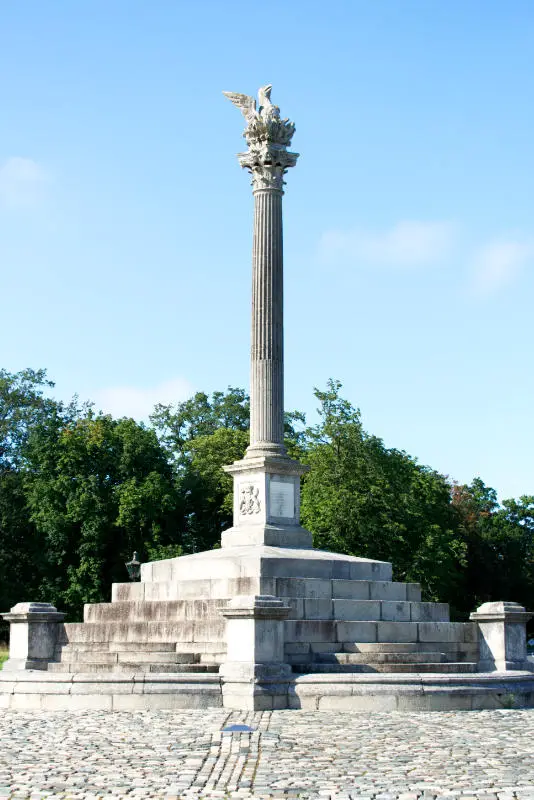
Deerfield House
Close by, the US flag flies high above another white, wrought iron gate commanding the access to a private residence. Deerfield House, built in the 18th century and former residence of the Chief Secretary of Ireland, is now the American ambassador’s residence.
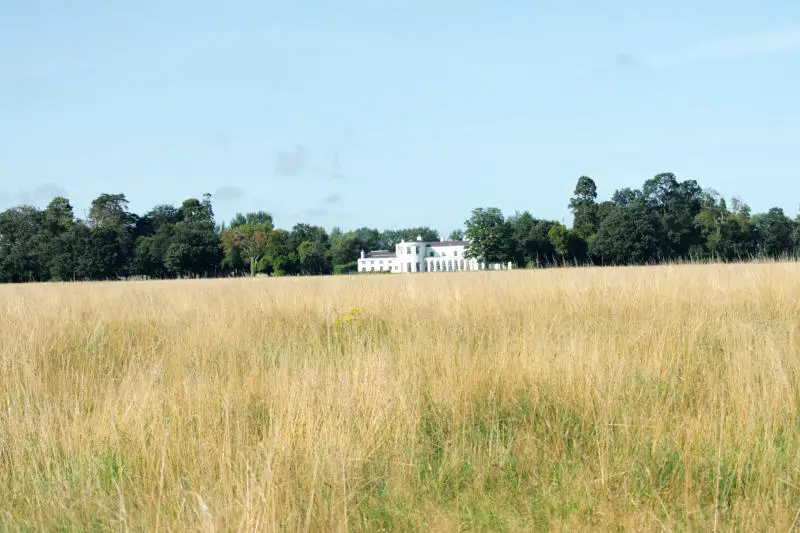
The impressive house, which has its own ballroom, was renovated by the US government in 1952 and is surrounded by 62 acres of land. But the grounds are private and security is tight. However, the curious can catch a glimpse of the house from the open fields on its south side.
The Papal Cross
The Papal Cross is a more recent addition to Phoenix Park. Built in 1979 for the visit of Pope John Paul II in Ireland, the white cross is 41-metre high and made of 40 tonnes of steel. Placed on a small mound, the cross dominates rolling fields of grass.
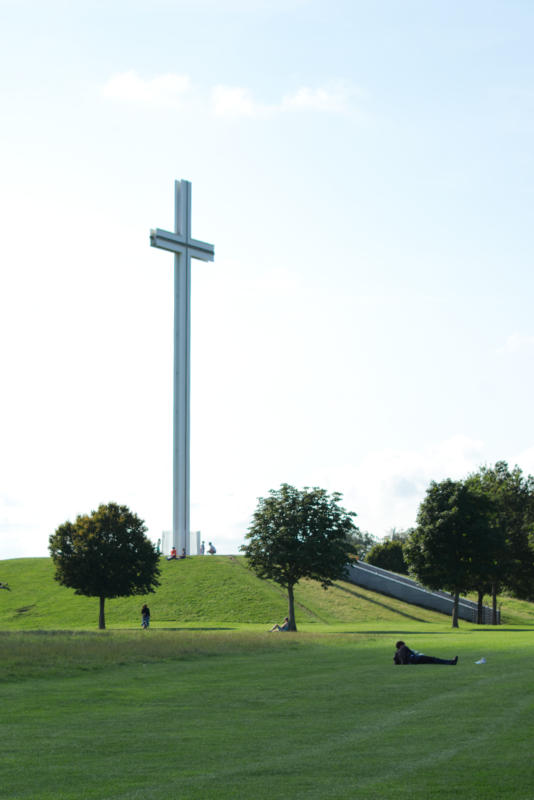
It’s from a wooden deck built around the cross that John Paul II celebrated mass to more than 1 million Irish people gathered in Phoenix Park with their picnic chairs. That’s one-third of the population of the country at the time that attended the event.
After everyone had packed up and left Phoenix Park in well-ordered manner, it was decided that the cross would stay where it stood. Whether you are a religious person or not, the cross of steel is a striking feature of Phoenix Park.
Ashtown Castle
Way older than the Papal Cross, Ashtown Castle is thought to be dating back to the early 17th century, or possibly the 16th century. The ancient dwelling, which is more a medieval tower house than a castle, was incorporated to Phoenix Park in 1663 and became the residence of one of the Keepers of the Park.
In the 18th century, the tower house underwent serious alterations and disappeared within the walls of a new house, Ashtown Lodge. Until the Irish Independence, the lodge would become the official residence of the third more powerful man in Ireland after the Viceroy and the Chief Secretary, the Under Secretary for Ireland.
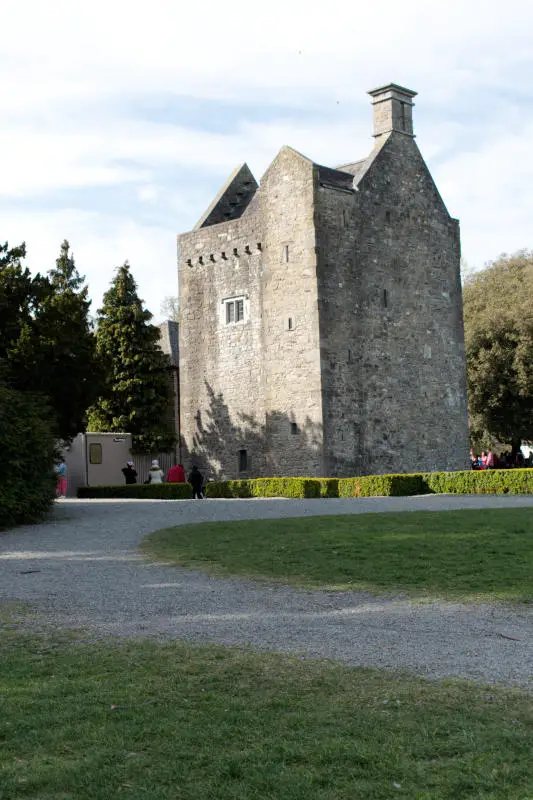
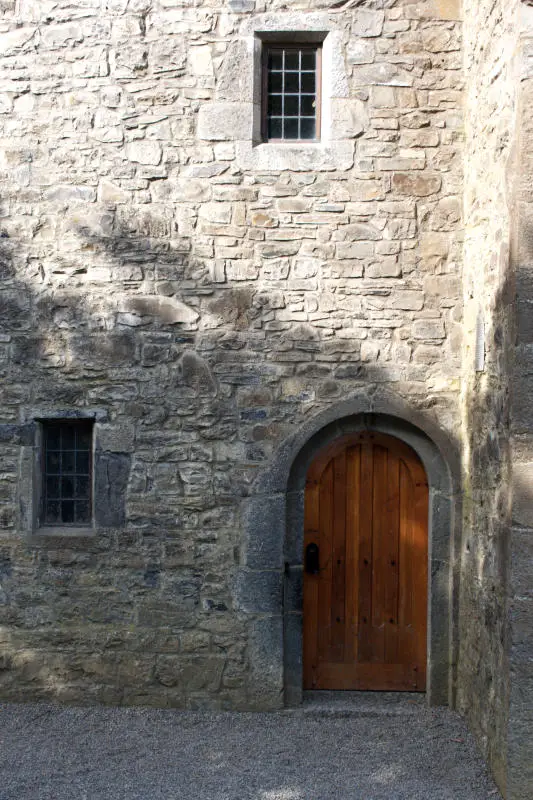
From 1929 to 1978, the Pope’s envoy to Ireland took residence in Ashtown Lodge before the site was redeveloped into a visitor’s centre. While renovating took place, the 18th century addition was torn down and Ashtown Castle was finally rediscovered. Free guided tours of the castle are now organised by staff at the Visitor Centre.
A Victorian, walled kitchen garden is also open to visitors on site. It was created to provide the lodge with fresh produce. The walled garden has also been restored to its original layout and gardeners are available for a chat about its history and usage.
Farmleigh House
Technically not in Phoenix Park, Farmleigh House is nonetheless accessible through the park and it would be a shame to miss it. Built in the mid-18th century, the house was bought in 1873 and extended by Edward Cecil Guinness, heir of Arthur Guinness, the famous brewer.
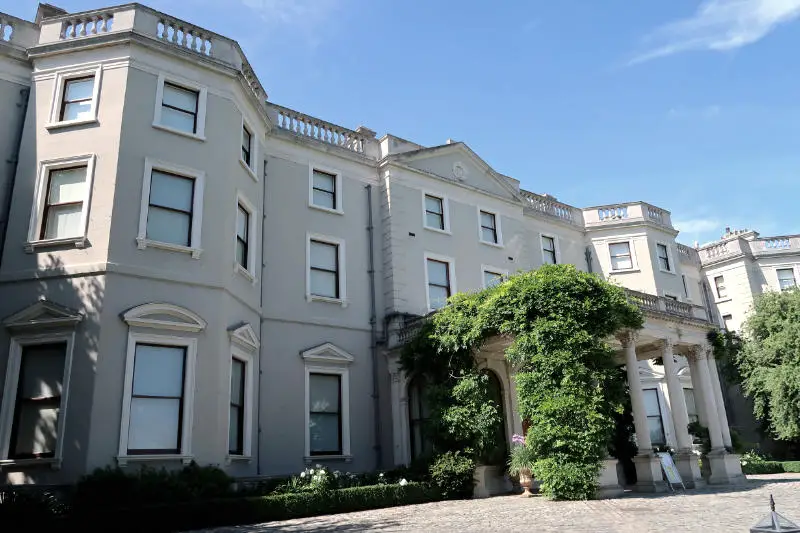
The stately house became the rustic retreat of the wealthy Guinness family until it was sold to the Irish government in 1999. After extensive renovation and upgrading, the house is now used as the official Irish state guest house, hosting heads of states and royals during their visits to Ireland.
When Farmleigh is not closed to visitors for official duty, its lavish interiors can be seen during guided tours of the house. Expect Waterford Glass chandeliers, 17th century Italian tapestries, a dome-shaped conservatory, wood-panelled library and much more.
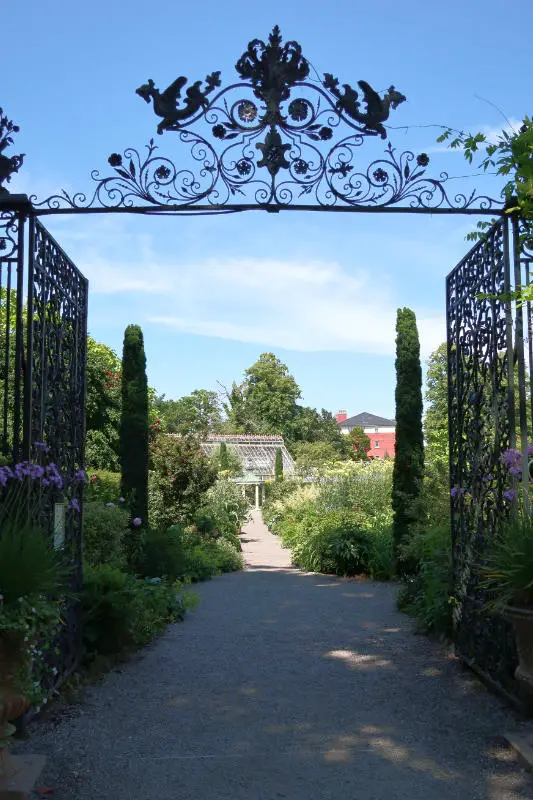
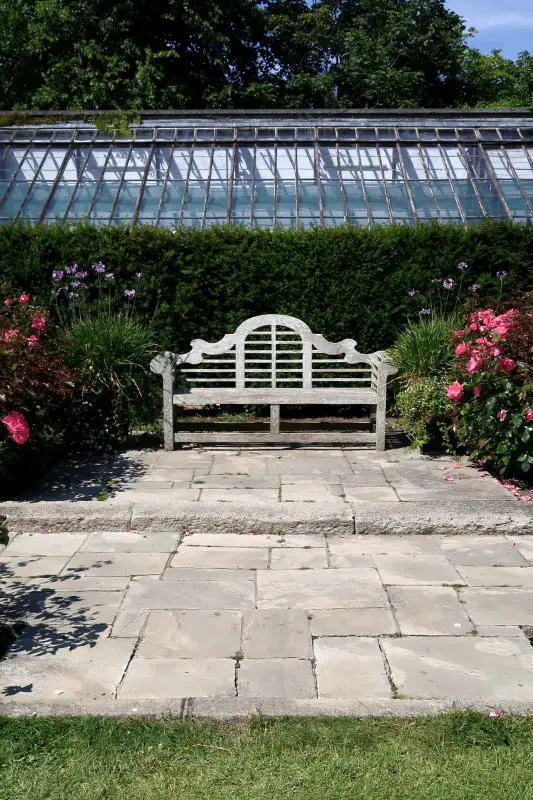
The gardens are free to roam. I especially like the walled garden and its colourful flower beds. A small lake can also be found on the estate, home to a colony of jolly ducks. And donkeys can be seen grazing in the enclosed pasture nearby.
A 37-metre-high clock tower built in 1880 is another attraction found on the Farmleigh estate. The tower erected by Guinness contains a water tank meant to provide the estate with a private water supply.
Map of Things to Do in Phoenix Park
How to Get to Phoenix Park
There are several entrances to Phoenix Park but its main gates, and the easiest access to the park, are located at its south-east corner on Parkgate Street, a stone throw away from Heuston Station.
Take the Bus from Dublin City Centre
Frequent city buses head towards Phoenix Park from Dublin city centre. You can easily catch bus 26 from the quays on the South side of the River Liffey. Get off at Heuston Station or Phoenix Park Gate.
You can check the Dublin Bus website for more alternative bus routes. The journey time shouldn’t take more than 15 minutes in heavy traffic from the city centre.
Hop on the Luas
The tram, or the Luas, is an even more convenient alternative: from Abbey Street or Jervis, jump on the Luas Red Line heading towards Tallaght or Saggart. Get off at Heuston Station and walk to the park’s main gates located just around the corner. Again, journey time shouldn’t be more than 15 minutes.
Free Car Parks if You Are Driving
If you decide to drive to Phoenix Park, know that several car parks can be found around the park. The main car park though is the Visitor Centre car park located near Ashtown Castle. Another substantial car park can be found at the Papal Cross.
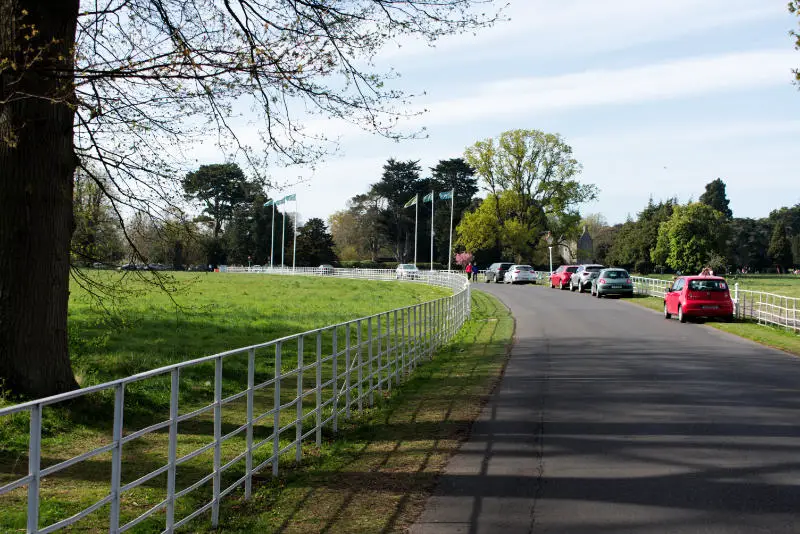
Parking in Phoenix Park is free. While the side gates close at night time, the main gates on Parkgate Street and Castleknock Gates remain open 24 hours a day, all week.
Cycle to Phoenix Park
If you have a Dublinbikes 3-day ticket, you can cycle to Phoenix Park from the city centre and return your bike to one of the Dublinbikes stations located near Heuston Station. There is one on each side of Heuston Bridge outside the train station and one more on Parkgate Street. You should easily find a stand available to return your bike.
Getting around Phoenix Park: Phoenix Park Bike Hire
Despite its rather large size, there are no public buses to take you from one end of the park to another. You will have to rely on your feet to discover its green alleys and monuments.
With dedicated cycling lanes, Phoenix Park is bike-friendly so you might consider renting a bike. As mentioned earlier, several Dublinbikes stations are available near Heuston Station.
Phoenix Park Bikes, located right at the park’s main gates on Parkgate Street, is also a popular option to whizz through the park. You can even rent a tandem from them if you’re looking for a fun and original way to visit the park.
Places to eat in Phoenix Park
After a few hours wandering around the park, you might feel the need to recharge with a snack or a proper meal.
Cafés in Phoenix Park
There are no restaurants within the boundaries of Phoenix Park, but you will find a few cafés serving small bites, treats and drinks.
The Tea Rooms
The Tea Rooms can be found on Chesterfield Avenue, past the People’s Flower Garden. Built in 1896 as a refreshment kiosk, the Tea Rooms sells salads, sandwiches, fresh cakes and desserts to be consumed al fresco seated at outdoor tables.
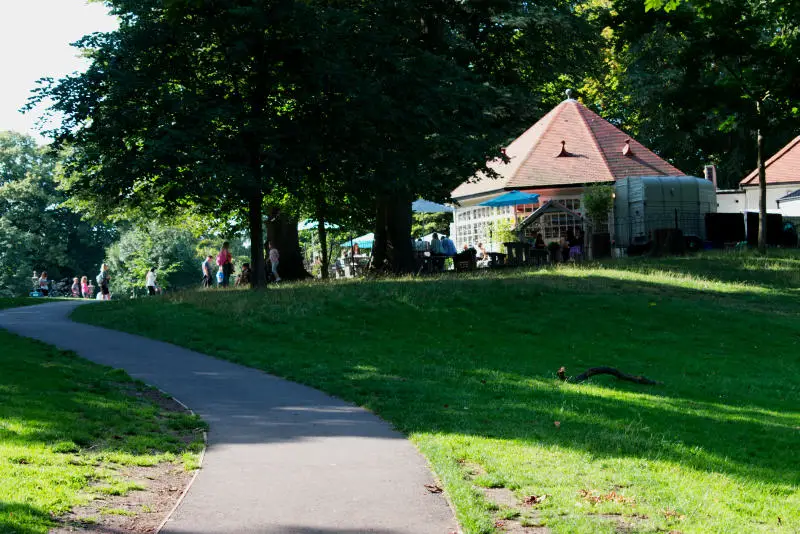
The Phoenix Café
Located across from Ashtown Castle in the grounds of the Visitor Centre, the Phoenix Café is another place to treat yourself after a long walk in the park. The café serves salads, scones and other homemade cakes and gluten-free options.
The Boathouse Café
You’ll find the Boathouse Café on the Farmleigh Estate, on the banks of its ornamental lake. The café is a charming wooden house with a deck overlooking the water where ducks frolic to their hearts’ content. It is the perfect place for a light lunch or for a treat along with tea or coffee.
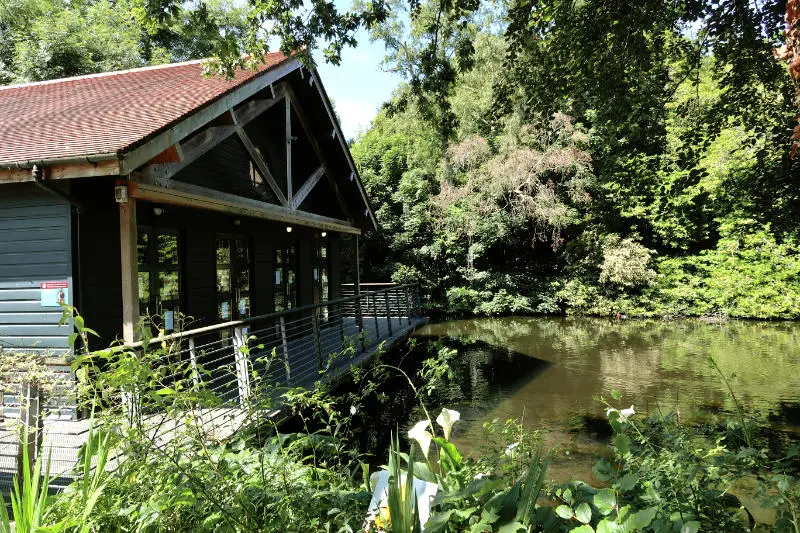
Restaurants Near Phoenix Park
Looking for a restaurant to put your feet up? Here come a few recommendations.
F.X. Buckley on Parkgate Street
Located on busy Parkgate Street, two minutes away from Phoenix Park’s main gates, F.X. Buckley Steakhouse is the ideal stopover before heading back to the city centre.
You’ll find the restaurant above Ryan’s, a beautifully refurbished Victorian pub. F.X. Buckley owns several addresses around Dublin and the establishment is well known for serving quality meat. Though a bit pricey, the burger is absolutely delicious.
The place is quite small, so it is better to book ahead to make sure you have a table at this delightful, vintage restaurant.
Douglas & Kaldi in Rathborne
Douglas & Kaldi is a café-restaurant located just 10 minutes walk from Ashtown Gates on Phoenix Park’s north side. The restaurant has outside sittings overlooking the Royal Canal dating back to the 18th century.
The restaurant serves a well priced full Irish breakfast, pancakes, sandwiches and salads, fish n’ chips and burgers and of course, a selection of desserts!
Ashtown train station located across from the restaurant makes it easy to head back into town after your meal. Or you can catch a bus to the city centre from the Navan Road nearby.
The Anglers Rest in Strawberry Beds
The Anglers Rest can be found in the village evocatively named Strawberry Beds on the west side of Phoenix Park, just a 5-minute walk from Knockmaroon Gates.
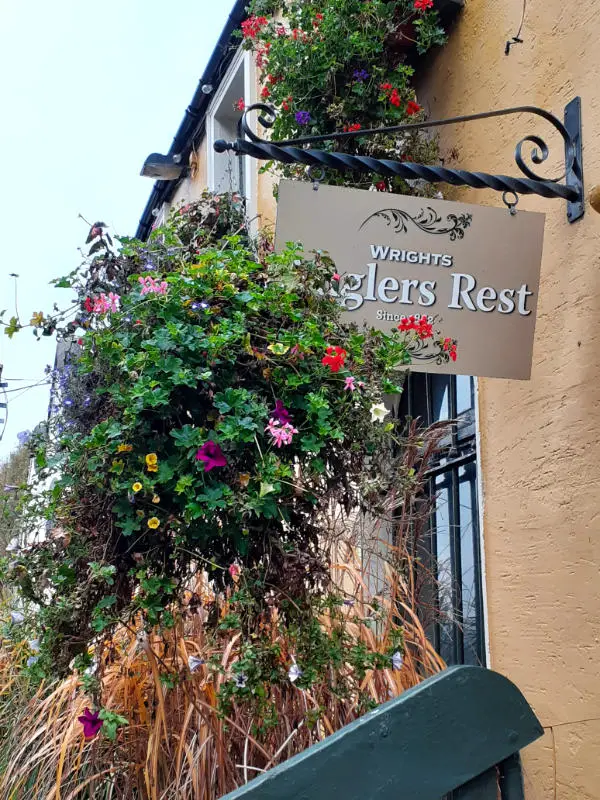
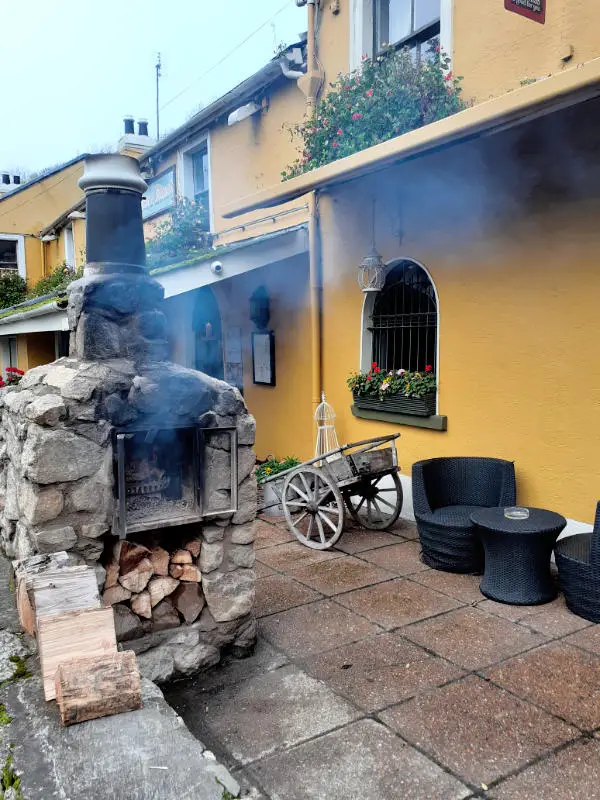
The restaurant serves high-end gastro-pub Irish food and seafood in a yellow, 19th century house on the north bank of the River Liffey. The place is expensive but well worth it if you are looking for quality Irish food in a remarkable setting. Booking ahead is highly advised.
Phoenix Park is popular with local power walkers, joggers, cyclists and lethargic sunbathers who take over the lawns as soon as the sun comes out. But Phoenix Park is more than an outdoor playground for overworked Dubliners.
It is filled with historical attractions in countryside-like settings, minutes away from the busy city centre. It is a great way to spend the day in the Irish capital. So don’t forget to pack your walking shoes before you go!
Like me, history is your jam? You might also want to read about the best castles to visit in Dublin!
Disclaimer: This post may contain affiliate links. If you click on a link, I earn a little money at no extra cost to you.
RELATED POSTS

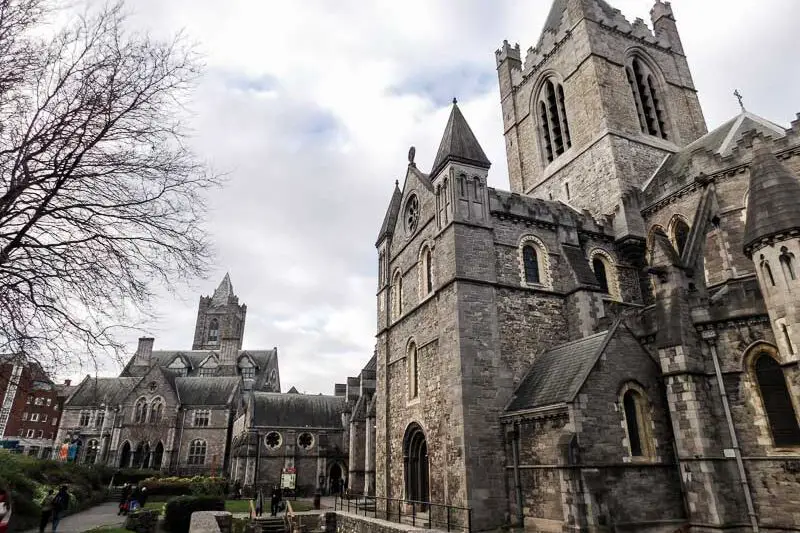


Leave a Reply